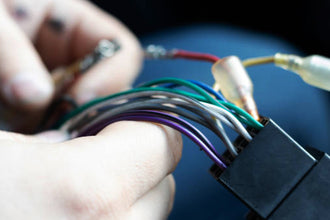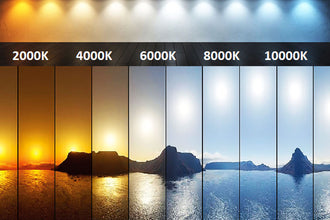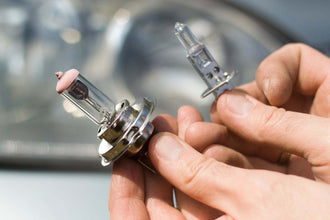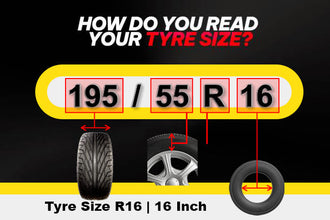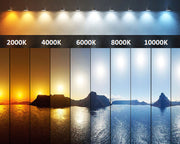
Installing LED headlights has many advantages over HID and halogen, such as brighter light, longer lifespan, and lower energy consumption. There are various LED car bulbs on the market. They are either high power or low power, expensive or low price. What factors should be considered when finding so many brands and types of LED headlight bulbs for the cars. What specs to look for when selecting LED headlight bulbs for car? What are the most important specs for LED headlight bulbs?
These are the most frequently asked questions by customers looking for LED headlight bulbs are also the most strategic questions for auto manufacturers to keep in mind while designing, manufacturing, testing, and improving LED bulbs.
It is said that choosing the best might not be the best choice. Here in this blog, we’ve come up with seven tips to be considered before choosing the most appropriate LED headlight bulb for your car.
|
Content #1 Brightness |
1. Brightness
The first thing to consider is the brightness and light distribution produced by the bulbs. To have brighter bulbs means better visibility for night-time driving. It could be helpful for those who have problems seeing clearly at night.
“Lumen” is a standard unit of measurement for brightness. The brightness of LED headlights will also depend on the wattage of the bulbs. One wattage diode is capable of emitting around 130 lumens. Generally, the higher the lumen rating, the brighter the bulbs. The brighter the headlight bulb, the higher the price.
Most LEDs are designed to reach between 8,000 and 13,000 lumens range whereas 2,000-4,000 lumens are the most common range for typical manufacturer headlights. It would be wise to note that headlight bulb manufacturers advertise a lumen rating such as 12,000; Actually, they are the combined rating for both bulbs - meaning each bulb is 6,000 lumens.
Manufacturers widely use total lumens during the LED bulb design and is often measured by an integrating sphere after the bulb has been made.
2. What are the best light beam patterns?

Light beam pattern refers to the light angle and shape emitting through the headlight housing. Light beam patterns are as important as brightness and directly related to driving safety. Quality LED headlight bulbs to emit a distinct 45 degrees cut-off line on low beams and focus on high beams.
Low beams without any dark areas have two main benefits. On the one hand, they are helpful to see the oncoming traffic clearly without shining the eyes of other drivers.
On the other hand, perfect light beam patterns are contributed to a broader vision for drivers at night driving. They can see clearly on both sides of the road and react sooner to the accident.
In some right-hand driving countries, the light beam pattern should be lower on the left and higher on the right, and vice versa.
3. LED Radiation Characteristics

There are different LED light chips with different shapes and positions of LED beads. They will all affect the light beam pattern. Quality LED light chips are supposed to mimic the original filament, and the spacing between both sides of beads should be as close to the width of the original filament as possible.
Looking at the above two pictures of the LED headlight, the footprint of the LEDs is too broad, and the space between the two sides of the LED is also too wide. Having spaced out too far and your beam pattern will be out of focus with no hot spot and cause glare to others on the road.

Are you looking for LED headlight bulbs that have a narrow LEDs array? One great example isconversion kit. The metal between LED is extremely thin, allowing the LED position to be as close to the original halogen position as possible.
4. What color temperature is better for driving?

Every light has a color temperature. Color temperature is conveyed in units called “Kelvin.” It can conclude that a Lower Kelvin rating means you have a yellow or orange light, which is called warmer color temperature. A Higher Kelvin rating means you have a whiter and more blue light. It is a cooler temperature.
Everyone perceives color differently, and different color temperatures change your perception of the object you are looking at. The natural light source during daytime belongs to a high color temperature. Our brain will be more energetic and ease eye strain under such a high color temperature illumination.
Usually, the sunlight is measured as a 5800K color temperature. While this 6000K is closed to daylight, providing a noticeable difference in brightness that shows a fantastic driving performance. Therefore, LED headlight bulbs on the market illuminate 5500-6500K color temperatures are better for night-time driving.

LED Bulbs come with 3 colors !

However, in some countries, rainy and foggy days are frequent. In this case, having LED car light bulbs perform well in all bad weather conditions is crucial for road safety. These bulbs integrated three colors and a flashing model. They are built to satisfy all your driving demands.
5. LED headlight bulb lifespan
People long ago thought that LED light bulbs didn’t cause much heat as long as they were just a little blinking light on your dashboard. But now, they are trying to create brighter light by consuming much energy. They do create heat!
The lifespan of LED headlight bulbs is highly relevant to the methods of heat dissipation. If the heat dissipation is poor, everything else is empty talk, such as the brightness. When LED headlights are working, most of the heat is generated by the complex circuit board at the base of the diodes.
There are three types of heat dissipation methods for LED headlights: 1. Pure aluminum heat sinks 2. Fan cooling 3. Copper tape cooling.
There are three basic theoretical methods of heat dissipation: 1. Conduction 2. Convection 3. Radiation

LED headlight bulb with pure aluminum heat sink is made from alloy aluminum. It helps to cool down the bulbs by thermal radiation of itself. More significant heat sink, then better heat radiation.
This fanless LED headlight bulb with a pure aluminum heat sink maintains a stable cooling capacity, but the power of the bulbs should be designed as low as possible, and the brightness will also decrease.

LED headlight bulbs with copper-strip heat sinks are made from copper wire with tin coating on the surface. Copper tape fins and wings are adjustable to maximize the area for heat dissipation.
However, all the wings can not be squeezed together, or the cooling performance will decrease. Besides, they are not 100% attached to the bulb body and are hard to install in the headlight housing.

LED headlight bulbs with high-speed fans are the most common cooling methods for headlight bulb makers. They take the initiative to dissipate the heat, which can ensure the regular operation of high-power bulbs.
The fan quality is vital for the lifespan of LED bulbs. Otherwise, the bulbs also cannot keep being used when the fan is broken.

Quality LED headlight bulbs are capable of lasting over 50,000 hours. The premise is that they have reliable heat conduction. Thus, have made a remarkably succeeded in this aspect. Max3 LED bulbs achieve efficient heat dissipation by being equipped with dual copper heat pipes technology, making an excellent balance of high brightness and cooling.





